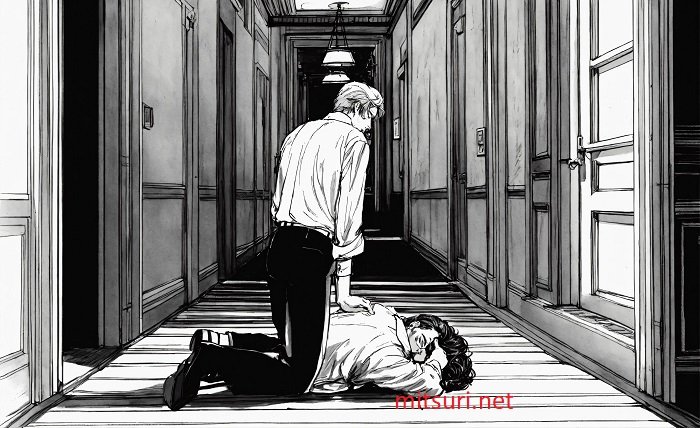Introduction
Greetings from the complex world of manga panels, where each line tells a tale and each frame opens up a new depth. Manga, the well-known comic book art style from Japan, has enthralled millions of people with its distinctive fusion of intricate storytelling and visual imagery. The manga panels, which are unique scenes painstakingly created to express emotions, actions, and a deeper comprehension of the characters and their adventures, are the fundamental components of this medium.
The Basics of Manga Panels
The fundamental elements of Japanese comic novels, or manga, are called manga panels. With a blend of text and artwork, each panel acts as a window into the story, bringing the reader into specific moments. These panels direct the reader through the story, setting the tone, tempo, and narrative flow. To fully appreciate the storytelling strategies used in manga, which can range from fast-paced action sequences to meditative passages that allow for character contemplation, one must have a solid understanding of manga panels.
History and Evolution
Manga panels have their roots in scroll paintings, an ancient Japanese art form that told stories in a continuous narrative flow. These eventually developed into the distinctive, framed panels that are seen in contemporary manga. Manga gained popularity as a form of amusement and social criticism after World War II, and creators experimented with panel arrangements to improve the reading experience. Manga is an intriguing subject for students studying visual communication because of its growth, which mirrors Japan’s shifting cultural dynamics and interests.
Anatomy of a Manga Panel
A manga panel is made up of multiple components that come together to make a narrative. The gutter, or the space between panels, acts as a break, allowing viewers to take in the scene before the frame establishes the panel’s boundaries. Speech bubbles represent conversation or ideas, while the artwork itself portrays location, action, and emotion. The way these components are arranged affects how well a panel interacts with the viewer.
The Role of Mangaka
The creative minds behind manga panels are known as mangaka, or manga artists. They design the panel layouts that effectively tell the tale in addition to producing the artwork. The way that each mangaka uses line, form, and composition to tell their story distinguishes their individual style. Famous mangaka who have influenced future generations of artists, such as Akira Toriyama and Osamu Tezuka, have established industry standards with their creative panel designs.
Classic Manga Panels
A few manga panels have become legendary in and of themselves, leaving a lasting impression on the industry. Classic panels from shows like “Dragon Ball,” “Astro Boy,” and “Naruto” are easily recognizable and frequently arouse intense feelings of nostalgia. These panels are praised for both their aesthetic value and the way they capture significant scenes from well-loved tales.
Methods and Approaches
Manga artists use a range of methods to breathe life into their panels. For example, action lines indicate motion and speed, whereas shading provides nuance and feeling. A sense of immersion can be produced by using perspective to pull the reader into the action. Knowing which technique to employ and when to apply it is what makes a mangaka skilled. Each technique has its purpose.
Manga Panels in Digital Age
The creation and consumption of manga panels have changed with the advent of digital media. More elaborate designs and effective production are made possible by digital tools, while greater dissemination is made possible by internet channels. Because artists may now reach a worldwide audience and experiment with interactive panel layouts, this transition has also given rise to new styles and genres.
Cultural Impact
Manga panels have had a profound cultural influence, affecting not only comic books worldwide but also other media like animation and cinema. Manga’s visual language has permeated popular culture worldwide, inspiring authors across a wide range of industries to embrace and modify its storytelling approaches.
Manga Panels as Art
Manga is still mostly viewed as entertainment, but more and more people are realizing how artistically valuable manga panels can be. Some panels, with their elaborate designs and nuanced emotions, are regarded as works of art. Manga panels are a significant art form, and exhibitions and auctions showcasing them emphasize the mangaka’s talent.
Creating Your Own Manga Panels
It’s crucial for anyone hoping to make their own manga panels to study the works of seasoned mangaka and comprehend the principles of both storytelling and art. It’s important to practice and develop one’s own style. A plethora of tools, such as software and drawing courses, are available to assist aspiring artists in honing their craft.
Conclusion
Manga panels are a distinct kind of visual storytelling that have enthralled audiences for years; they are more than just passages from comic books. Manga panels are still inspiring today, even with their current digital changes from their historical origins. We are excited about the fresh stories these panels will convey in addition to appreciating the artistic merit of these panels.
FAQ
What exactly are manga panels
Manga panels are small frames or boxes with text and pictures that work together to construct a narrative. They serve as the basic building blocks of a manga page, directing the reader through the storyline and the characters’ emotional terrain.
Why is panelling important in manga
Paneling is important because it sets the tone and rhythm of the narrative. While poorly done paneling can confuse readers and impede the flow of the tale, well-done paneling can enrich a story by adding dynamic and visually striking elements. Manga artists must possess this ability in order to properly tell their stories.


